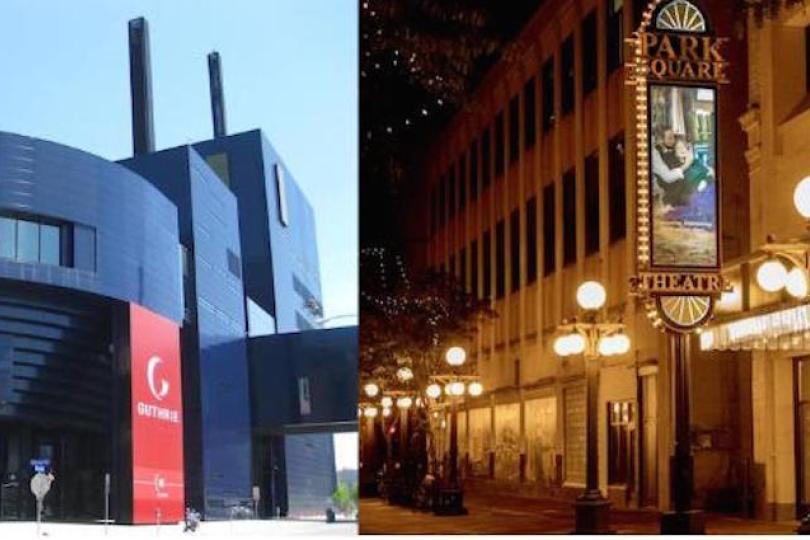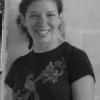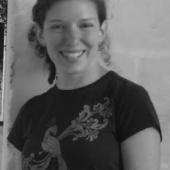Analyzing new season announcements

The Twin Cities’ biggest theaters have recently released their 2016-2017 seasons, and from where I sit, there seems to be some pretty intensive calculus involved with programming a new season. Our leading large non-musical theaters – the Guthrie on one side of the river, and Park Square on the other – juggle multiple spaces, host visiting companies, and cater to a broad spectrum of constituents. Both theaters have some surprises in store for the coming season. The question is, are they a harbinger of changes to come? And how might this impact mid-size and smaller theater companies as they compete for audiences?
Of course, everyone is abuzz about the Guthrie – not only because it is Joseph Haj’s first full season as Artistic Director, but because of its new “Level Nine” initiative. In case you haven’t heard about it by now, there are lots of reasons to be excited about Level Nine. First and foremost, all tickets to performances on the ninth floor (the Dowling Studio) will be discounted to $9, which is the first time that the Guthrie has felt truly accessible. For less than the cost of a movie ticket, regular people can now go see some high-quality theater – and the plays programmed in the Dowling Studio include new and interesting works that are poised to attract younger and more diverse audiences. (These include Jeanne Sakata’s Hold These Truths, about a survivor of the Japanese Internment Camps, Jackie Sibblies Drury’s We Are Proud to Present a Presentation About the Herero of Namibia, Formerly Known as Southwest Africa, From the German Südwestafrika, Between the Years 1884-1915, and a commissioned piece by KJ Sanchez about the resettlement of refugees and immigrants to the Twin Cities.)
Haj is also working some new works into the traditional Guthrie mainstage programming. He’s got the old standards that audiences from the Joe Dowling era are used to: Shakespeare, a Jane Austen adaptation, The Lion in Winter, Sondheim, and, or course, A Christmas Carol. But Haj has also worked in a new Moving Company production called Refugia, starring a number of former Jeune Lune company members, as well as The Parchman Hour, about the 1961 Freedom Riders, an adaptation of The Bluest Eye, and a production of Native Gardens, a comedy about racial insensitivity. (I have my doubts about that last one.)
What is most interesting to me about the Guthrie’s mainstage programming is its timing: while most of its old-school productions are in the fall and winter, if you want to go to a Guthrie mainstage show between April 15 and June 11, your options are The Bluest Eye or Refugia. This means that subscribers will have no choice but to choose between a new work about current events or a play with lots of people of color in it. I am sure that this was no accident, and I am a big fan.
Is Park Square pulling back?
But while the Guthrie is getting more of the hype this season, Park Square seems to be easing into the back seat. Ever since it opened its Andy Boss Thrust Stage in 2014, the Park Square has been welcoming smaller companies and new works into its programming, including annual appearances by the Sandbox Theatre, Theatre Pro Rata, and Girl Friday Productions.
Park Square has also been featuring perspectives of women and people of color over the past couple of years: this season alone included productions about Nina Simone and South Africa during apartheid, and this summer we’ll see a Sandbox production about a boxer during Jim Crow America and a Mu Performing Arts presentation of tot: the Untold, yet Spectacular Story of (a filipino) Hulk Hogan.
So in comparison, the Park Square’s 2016-17 season looks, well, pretty lackluster. Not including a two-day-only remount of The House on Mango Street (which opened the Park Square’s new thrust stage in 2014), the mainstage will be hosting six productions. Two of them are mysteries adapted from Sherlock Holmes and Nero Wolfe, one is a Gershwin-inspired cabaret, and another is a David Ives adaptation of a Pierre Corneille play. The least nostalgic option is Amy’s View, a 1997 David Hare play set from 1979 to 1995, and the least white option is Flower Drum Song, a co-production with Mu Performing Arts.
Their Thrust Stage programming has also veered toward the mainstream this year. All six productions seem interesting but uncontroversial, like new productions of A Raisin in the Sun and Macbeth, and Sandbox’s next creation, which will be about a man who cracked the game show “Press Your Luck.”
Is there a trend toward new work?
Given how much goes on behind the scenes at large theaters, it is hard to say whether the Park Square’s underwhelming 2016-17 season is a fluke or an intentional change in direction. And as excited as I am about $9 tickets, the success of the Guthrie’s cheaper ninth-floor events remains to be seen (they also haven’t yet revealed their full line-up for the Dowling Studio). But if you also consider the Jungle Theater’s upcoming productions of Bars and Measures (a rolling world premiere) and Le Switch (part of PlayLabs 2014 at the Playwrights’ Center), the trend towards well-established theaters hosting newer artists is undeniable.
This could mean a lot of different things for the local scene. It could make it even harder for young, independent companies to attract audiences without the patronage of a larger venue. It could mean that larger theaters will continue to stage more conservative options in order to keep afloat while supporting riskier new ventures.
But with the Guthrie, the Park Square, and the Jungle all demonstrating interest in new works, this could also be an exciting and revitalizing time for the theater community. Could our biggest theaters actually start a local arms race for the best, most innovative new playwrights and theater companies? Time will tell, but I hope everyone keeps upping the ante.




